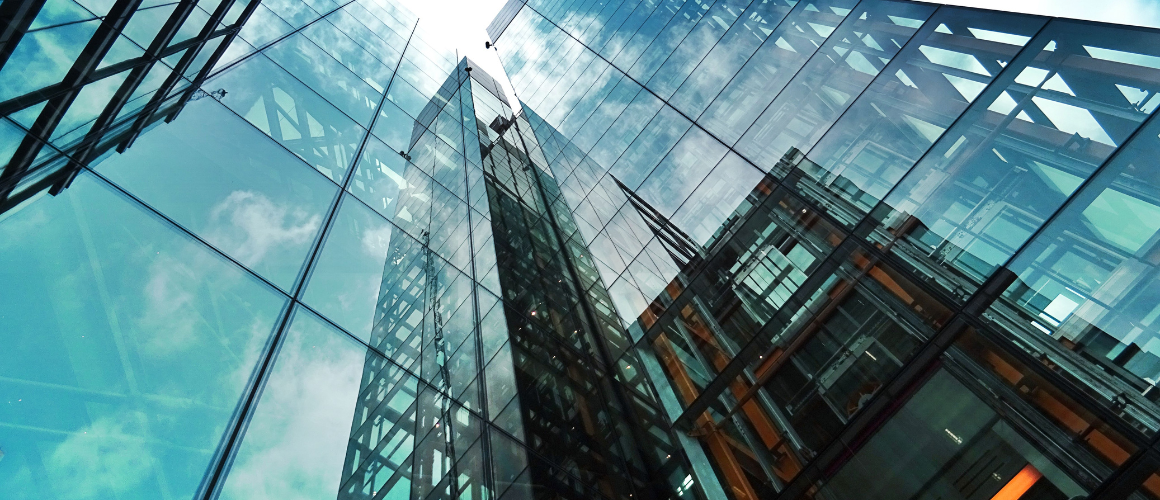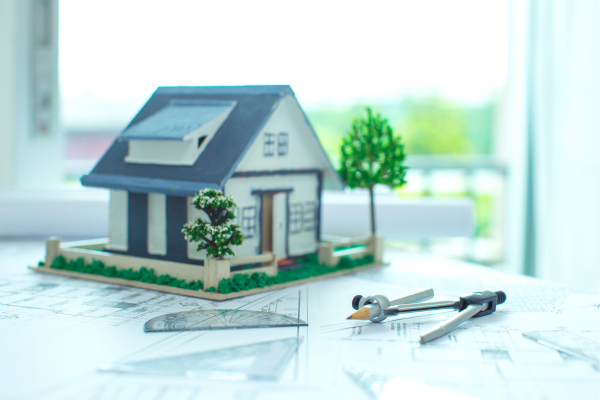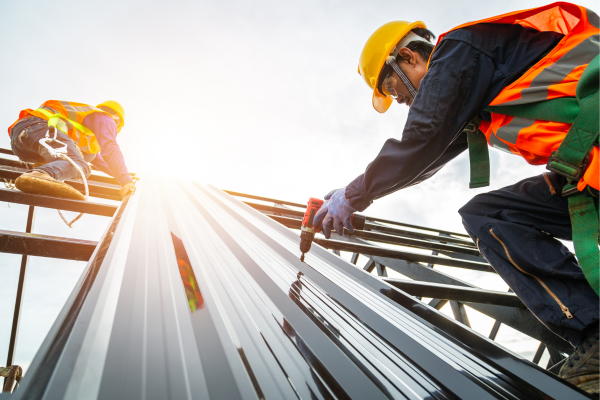
The Future of Construction: Harnessing AI for Smarter Building
Imagine you're standing in front of a building so smart, it almost seems like it knows you. This isn't just any building, but one shaped by Artificial Intelligence (AI) - a blend of design and construction that's changing everything we thought we knew about architecture. Today, AI isn't just a tool; it's a revolutionary partner in creating spaces that are not only beautiful but smart and sustainable too.
From homes that adjust their temperature for your comfort to offices that manage light based on the time of day, AI is at the forefront of this architectural revolution. But it's not all about comfort. AI is also making construction safer, faster, and less costly. It's analyzing data in ways we never could, predicting problems before they happen, and offering solutions we never imagined.
And this revolution is just getting started. Every day, AI's influence in architecture and construction grows, bringing new possibilities and challenges. In this journey, we'll explore how AI is not just shaping our buildings but transforming the very way we think about design and construction. Welcome to the architectural revolution, where AI is the driving force behind innovations that are reshaping our world, one space at a time.

AI in architecture feels like stepping into a new world where creativity meets precision in ways we never dreamed of. Picture this: a home designed not just by humans but with the help of AI, resulting in a place that's not only stunning to look at but also incredibly smart. In France, an innovative startup did just that, using AI to create a 3D-printed house that's both aesthetically pleasing and structurally sound. It’s a prime example of how AI is pushing boundaries, making custom, sustainable homes a reality for more people.
Then there's The Edge in Amsterdam, hailed as one of the greenest buildings in the world. It's a beacon of what's possible when AI and architecture join forces. With sensors and smart systems throughout, The Edge uses data to make real-time adjustments, ensuring energy efficiency and comfort for its occupants.
These projects are just the tip of the iceberg. AI is transforming architecture by doing the heavy lifting on complex calculations and design challenges, allowing architects to focus on what they do best: dreaming up innovative and meaningful spaces. This revolution is about blending technology with tradition, opening up a world of possibilities that were once confined to the imagination. It's about creating buildings that are not just structures but experiences, crafted with an intelligence and understanding that was once solely human. As we stand on the brink of this new era, it's clear: AI in architecture isn't just changing the way we build; it's changing the way we live.
Bringing AI and the Internet of Things (IoT) together in buildings isn't just smart; it's like giving buildings a brain and senses. Imagine living or working in a place that adjusts lighting, temperature, and even air quality in real-time, just to suit your comfort. That's the magic of integrating AI with IoT in smart buildings.
This combination means buildings not only collect data through sensors but also learn from it. For instance, a smart building might notice when certain rooms are typically empty and turn off lights and heating to save energy. Or, it could analyze the air quality and adjust ventilation accordingly, ensuring everyone inside is breathing easy without even realizing it's happening.
What's truly revolutionary about this blend of AI and IoT isn't just the immediate comfort or efficiency. It's about buildings evolving over time, becoming more attuned to the needs of the people inside them and the environment around them. This isn't a distant future scenario; it's happening now. Buildings are getting smarter, learning from us and about us, making our spaces not just places to be but partners in our day-to-day lives. This integration is a giant leap towards sustainability, personalization, and innovation in architecture, marking a new era where our buildings care for us, almost as much as we care for them.
AI's role in sustainable urban development is like a master planner with an eye for the future. It's not just about making buildings smarter; it's about making cities more livable and sustainable. By analyzing vast amounts of data, AI helps us understand how to reduce energy consumption, manage waste, and improve transportation. This means less pollution, lower carbon footprints, and healthier urban environments.

Imagine a city that learns and adapts, where traffic flows smoothly to reduce emissions, and energy use is optimized for both comfort and conservation. AI makes this possible by predicting patterns and suggesting adjustments before we even know we need them. It's like having a guardian angel for the city, looking out for both the planet and its people.
This isn't just a dream. It's a growing reality where AI empowers architects and city planners to create sustainable solutions that meet our needs today without compromising the future. In this new era of urban development, AI is the key to unlocking a greener, more sustainable world for generations to come.
Diving into AI in architecture and construction is exciting, but it's not without its hurdles. One of the big challenges is data security. Think about it: smart buildings are a goldmine of data, and keeping that data safe is paramount. We're talking about everything from personal comfort settings to the structural secrets of the building itself. Ensuring this information stays secure is a top priority, and it's not always easy.
Then there's the ethical side of things. As AI takes on more roles, we have to ask: are we okay with machines making decisions about our living and working spaces? And how do we ensure these AI systems are fair and unbiased? It's crucial to keep the human element in the loop, making sure AI assists rather than replaces human decision-making.
Plus, there's the learning curve. Keeping up with AI's rapid development requires constant learning and adaptation. Architects and builders need to stay on their toes, embracing new technologies and methodologies to harness AI's full potential responsibly.
So, while AI promises a future of innovative and sustainable design, navigating its challenges and ethical considerations is essential for a future where technology and humanity coexist in harmony.
Peering into the future of architecture and construction with AI at the helm feels like stepping into a realm of endless possibilities. Imagine buildings that heal themselves, roads that charge your car as you drive, or homes that adapt to the weather to keep you comfortable. The next wave of technological innovations, powered by AI, is set to make these visions a reality.
Autonomous drones could soon be buzzing around construction sites, conducting surveys, and ensuring that projects are on track and safe, revolutionizing project management and site monitoring. Then, there's the promise of 3D printing in construction. With AI's precision, we could see homes and buildings being printed in a fraction of the current construction time, reducing costs and environmental impact.
Generative design is another frontier. Here, AI algorithms offer architects a sandbox of possibilities, generating thousands of design options based on specific criteria. This means designs that are not only beautiful and unique but also optimized for energy efficiency and sustainability.
But perhaps the most exciting is the integration of AI with robotics. Robots, directed by AI, could take on the dangerous, repetitive tasks on construction sites, improving safety and efficiency. From laying bricks to installing drywall, these robotic assistants could change the face of construction labor.
As we look ahead, the role of AI in shaping our built environment is undeniable. It promises a future where technology and human creativity intersect, leading to innovations that are as sustainable and efficient as they are awe-inspiring. The journey into this future is just beginning, and the possibilities are as vast as our imagination.
As we wrap up our journey through the evolving landscape of architecture and construction powered by AI, it's clear that we're not just witnessing a technological revolution; we're participating in a transformative movement that's reshaping our world. The fusion of AI with design and construction has unlocked new horizons of creativity, sustainability, and efficiency, promising a future where our built environment is smarter, safer, and more responsive to our needs than ever before.
Yet, as we embrace this future, we also navigate the challenges and ethical considerations that come with it, reminding us that progress should always be balanced with responsibility. The path forward is a collaborative one, requiring architects, builders, and technologists to work together, ensuring that the advancements in AI enrich not just our spaces but our lives and communities.
In this architectural revolution, the potential is limitless. By harnessing the power of AI, we're not just building buildings; we're building a better future. So, let's step into this new era with optimism and a commitment to innovation, guided by the lessons of the past and the promise of tomorrow.
Now that we've explored the vibrant intersection of AI and the built world, it's your turn to be part of this transformative journey. Whether you're a professional in architecture, construction, or a tech enthusiast, the future is ripe with opportunities for innovation and sustainability. Dive into learning about AI technologies, engage in discussions, and share your insights and visions. Let's collaboratively shape a future where architecture not only reflects our dreams but is also in harmony with our planet. Your ideas, creativity, and actions today will lay the foundation for tomorrow's marvels. Join the conversation, share this exploration, and let's build a smarter, more sustainable world together.